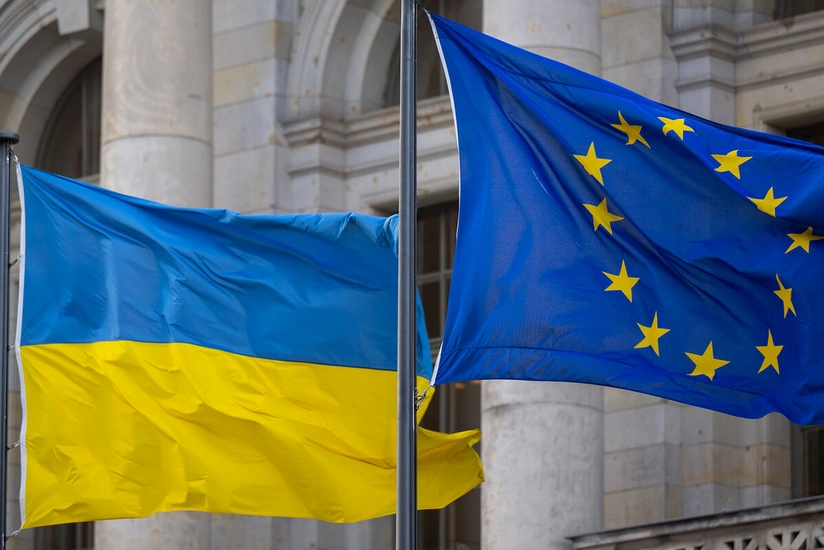Europe floats Ukraine-Russia buffer zone in push for peace
- 29 August, 2025
- 11:26

European leaders are weighing the creation of a 40-kilometer buffer zone between the Russian and Ukrainian frontlines as part of a peace deal, a last-ditch idea Moscow has embraced that would likely stretch the continent's modest number of peacekeeping troops, Report informs referring to Politico.
The proposal, according to five European diplomats, is among several that military and civilian officials are considering for either a postwar or ceasefire scenario in Ukraine. Officials disagree how deep the actual zone could be and it's unclear Kyiv would accept the plan as it would likely come with territorial concessions. The US does not appear to be involved in the buffer zone discussions.
But the fact that officials are toying with blocking off a strip of land inside Ukraine to force fragile peace is indicative of NATO allies' desperation for a resolution to a war nearing its fourth year. Russian President Vladimir Putin has shown no desire to stop fighting. Moscow on Thursday launched a rare attack on the center of Kyiv, killing at least 19 people and damaging European Union offices.
"They're grasping for straws," Jim Townsend, a former Pentagon official who oversaw Europe and NATO policy under the Obama administration said. "The Russians are not afraid of the Europeans. And if they think that a couple of British and French observers are going to deter them from marching into Ukraine, then they're wrong."
A partition is fraught with historical significance. European diplomats have stayed away from likening it to the heavily guarded divide between North and South Korea, which are technically still fighting. They compare it more to the division of Germany during the Cold War.
Putin and his deputies have said they are working to create buffer zones along Russia's borders with Ukraine, which would put more distance between Moscow and Ukrainian artillery and drones. But no details have emerged to suggest what those proposals would entail.
The number of servicemembers needed to patrol the border also remains a concern. Officials are discussing from 4,000 to around 60,000 troops. But countries have yet to make any commitments and President Donald Trump has backed away from a potential US troop presence.
NATO already is struggling to prepare a response force of 300,000 troops to defend the alliance's eastern flank from a future Russian attack. And any peacekeeping force would play dual roles, patrolling near the demilitarized zone while also training Ukrainian troops, according to two of the diplomats. They, like others, were granted anonymity to speak about an unresolved issue.
Allies are holding off on making public troop commitments while they wait for key details, according to one of the European officials. Their questions include the rules of engagement for NATO troops on the frontline, how to manage a Russian escalation, and whether they would need third countries to patrol the area if the Kremlin objects to alliance troops within a buffer zone.
"Everyone is trying to move as quickly as possible on security guarantees so Trump doesn"t change his mind," about pushing Putin to a negotiated settlement, said one of the European officials.
 USD - 1.700
USD - 1.700  Azerbaijani Version
Azerbaijani Version  Russian Version
Russian Version